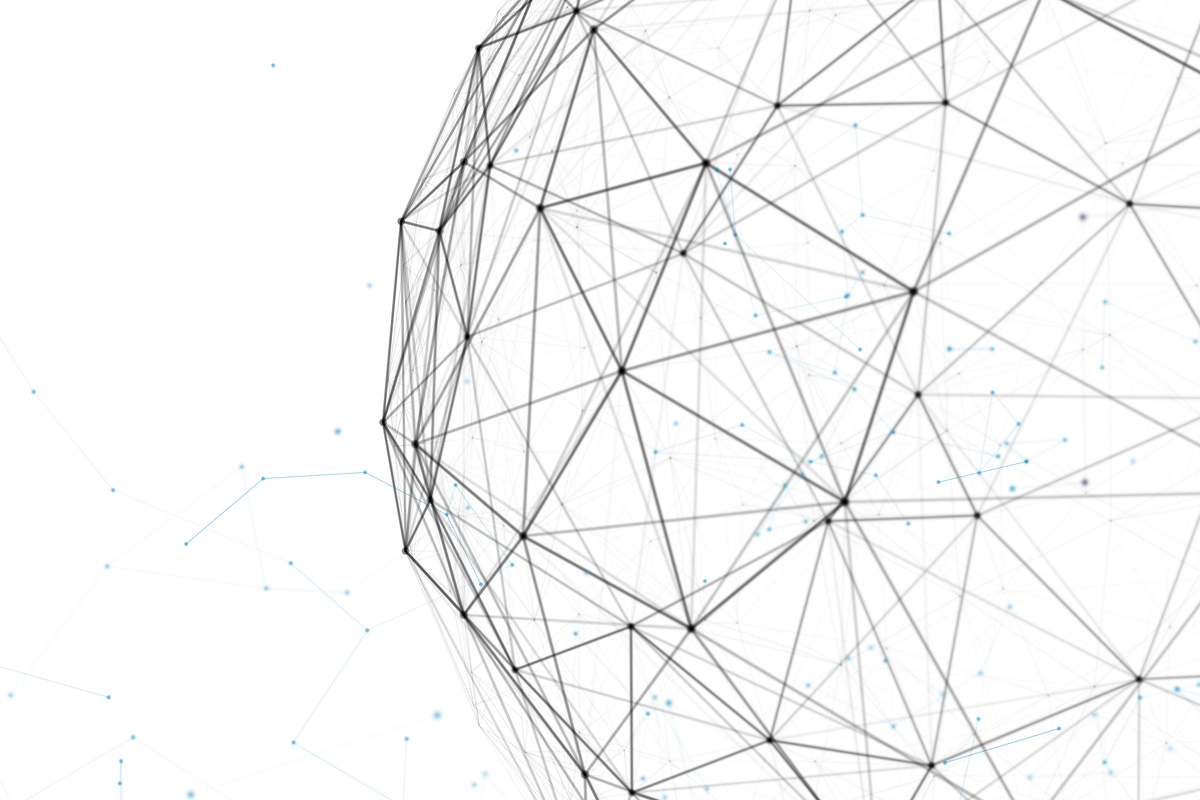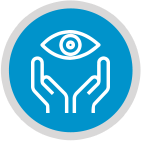Advanced LASIK Technology: Why Today’s LASIK is Different Than Before
November 14, 2023 | LASIK
It's time to consider the freedom that advanced LASIK technology can afford you. The days of struggling with eyeglasses that never seem to fit quite right or dealing with the daily hassle of contact lenses are gradually becoming a thing of the past. At ClearSight LASIK, we are at the forefront of LASIK eye surgery and can help you break free from these limitations, all thanks to the advanced technology we utilize.
LASIK (Laser-Assisted In Situ Keratomileusis) technology has made leaps and bounds since its first introduction in the late 1980s. The technology's evolution continues to make the procedure safer, more effective, and increasingly customizable. So, if you've thought about LASIK in the past and decided against it, it's time to reconsider. Today's LASIK is different, and ClearSight is here to help you see life clearly without glasses or contacts.
Benefits of Advanced LASIK Technology
-
Precision: With the introduction of all-laser or bladeless LASIK, surgeons can create a corneal flap with much greater precision, reducing risks and improving outcomes.
-
Customization: The use of wavefront and topography-guided technology allows for a fully personalized treatment plan. It accounts for the unique characteristics of each patient's eyes, improving the quality of vision.
-
Safety: Eye-tracking technology has enhanced the safety of LASIK significantly. By tracking minute eye movements during the procedure, the laser can adjust in real-time, minimizing the risk of potential complications due to eye movements.
-
Reduced Risks: The combined improvements in accuracy, customization, and safety have resulted in a substantial reduction in the risk of complications, such as dry eyes, halos, and glare.
-
Improved Outcomes: Overall, the advances in technology have led to improved visual outcomes, with a greater percentage of patients achieving 20/20 vision or better.
-
Quicker Recovery: The precision of the modern LASIK procedure has contributed to quicker and smoother recovery periods, with patients experiencing less postoperative discomfort and a quicker return to normal activities.
-
Patient Comfort: The use of modern LASIK technology and techniques has significantly enhanced patient comfort during the procedure, with less invasive surgery and faster procedures.
-
Long-Term Satisfaction: The benefits of modern LASIK—improved safety, efficacy, and comfort—contribute to higher long-term patient satisfaction rates.
What is LASIK and How Has It Evolved?
LASIK is a surgical procedure approved by the United States Food and Drug Administration to use laser technology to correct refractive errors in the eye. These include myopia (near-sightedness), hyperopia (far-sightedness), and astigmatism. It achieves this by reshaping the cornea - the transparent front part of the eye - to ensure that light entering the eye can be properly focused onto the retina for clear vision.
The initial phase of LASIK involved the use of a microkeratome, a mechanical blade, to create a corneal flap. The surgeon would then use an excimer laser to reshape the cornea. However, the use of a mechanical blade posed some risks, including irregular flaps and flap dislocation.
This all changed with the advent of femtosecond laser technology in the early 2000s, which allowed for bladeless LASIK, also known as IntraLase. The femtosecond laser, which operates on a principle known as mode locking, or emitting ultra-fast pulses of light to create a precise, thin flap in the cornea, reducing the risks associated with the mechanical blade. Today, the bladeless approach has become the gold standard in LASIK procedures.
LASIK, from its early beginnings to its advanced state today, represents the evolution of a transformative technology aimed at improving the quality of life by enhancing vision. At ClearSight, we embrace these advancements, utilizing state-of-the-art technology to provide our patients with the highest standards of safety, precision, and personalization, delivering on our promise to help you experience the freedom of clear sight.
Customized LASIK: An Individualized Approach
One of the significant advances in LASIK technology over the years is the development of wavefront technology, which enables a highly personalized procedure. Wavefront-guided LASIK maps the unique characteristics of each individual's eyes to provide a custom treatment plan.
The human eye is not perfect, and it has aberrations just like a camera lens. Lower-order aberrations include nearsightedness, farsightedness, and astigmatism, while higher-order aberrations can cause issues such as glare, halos, and problems with contrast. Traditional LASIK could correct lower-order aberrations but not the higher-order ones.
The introduction of wavefront technology changed this. Wavefront LASIK measures both lower and higher-order aberrations, providing a detailed 'map' of the eye's optical system. This information is then used to guide the excimer laser during the procedure, allowing for a highly personalized treatment that can lead to better visual outcomes and a reduction in night vision symptoms. With the advent of wavefront-guided LASIK technology, we can now not only correct standard refractive errors but also treat complex issues known as aberrations of the eye, offering patients the potential for even clearer, sharper vision than before. While conventional LASIK has been successful in correcting basic vision problems, the integration of wavefront technology in modern procedures has brought added benefits, including an enhancement in contrast sensitivity, enabling patients to perceive finer visual details in various light conditions.
The Importance of Eye-Tracking Technology
The human eye is naturally prone to movements - both voluntary and involuntary. During a LASIK procedure, eye movements can pose a challenge as they may lead to suboptimal laser placement, affecting the surgery's accuracy.
Modern LASIK procedures now incorporate sophisticated eye-tracking systems that follow the eye's minute movements during the surgery. These systems can track movements in multiple directions (up and down, left and right, and even rotational movements). They can also adjust the laser in real-time or pause the procedure if the eye moves out of range. This contributes to a more accurate, safer procedure and better post-operative outcomes.
Improving Precision with Topography-Guided LASIK
Another advancement in the LASIK procedure is the development of topography-guided LASIK. Topography-guided LASIK is particularly useful for patients with irregular corneas or who have previously had surgery. It uses detailed maps of the cornea's surface, including its hills and valleys, to guide the laser treatment.
This advanced technology can help deliver a more uniform corneal shape, leading to improved visual outcomes and a potential reduction in symptoms like glare and halos. It can also potentially correct minor refractive errors that were not addressed in prior LASIK or other refractive surgeries.
Beyond LASIK: SMILE and Other Advancements
While LASIK remains a popular choice for vision correction, other procedures have also emerged. Small Incision Lenticule Extraction (SMILE) is a minimally invasive procedure that uses a femtosecond laser to create a small lens-shaped piece of tissue within the cornea, which is then removed through a small incision. This leads to a change in the shape of the cornea and correction of refractive errors. SMILE may be beneficial for patients who aren't suitable candidates for LASIK due to dry eyes, thin corneas, or a high degree of refractive error.
Why Choose ClearSight LASIK?
At ClearSight LASIK, we believe in providing our patients with the freedom of clear vision. Our dedication to harnessing advanced LASIK technology means that we offer a highly accurate, safe, and personalized approach to vision correction. We leverage comprehensive data gathered from advanced diagnostic tools to deliver personalized treatment plans, ensuring each LASIK procedure is as precise and effective as possible for our patients.
Our commitment to using the most cutting-edge technology sets us apart. We offer all-laser LASIK procedures, utilizing wavefront-guided technology, topography-guided LASIK, and sophisticated eye-tracking systems to ensure each patient receives the best possible care.
Moreover, our highly skilled and experienced surgeons will guide you through the process, from initial consultation and assessment, through the procedure itself, and during your post-operative care.
Today's LASIK is indeed different - it's safer, more accurate, and more personalized than ever before. And at ClearSight LASIK, we're proud to be part of this evolution. As a leading provider of refractive surgery, ClearSight is committed to using the most advanced technology and techniques available, offering patients an effective and safe solution to reduce or eliminate their dependence on glasses and contact lenses. Let our team trained in the latest advancements in ophthalmology guide you on your journey to clear sight. Experience the freedom of ClearSight LASIK today. Call now to schedule your LASIK consultation.
FAQ's about Advanced LASIK Technology
How has LASIK technology evolved over time?
LASIK technology has significantly advanced since its inception. The initial blade-based approach has been replaced by the bladeless method, using femtosecond lasers for increased precision. Wavefront and topography-guided technology now allow for personalized treatment, while sophisticated eye-tracking systems enhance the surgery's accuracy and safety. The remarkable advancements in LASIK technology, particularly wavefront and topography-guided procedures, have not only improved visual acuity but also enhanced the overall quality of visual perception, offering patients the ability to see the world around them more clearly and vividly.
What is wavefront-guided LASIK?
Wavefront-guided LASIK is a customized procedure that takes into account the unique characteristics of each patient's eyes. It measures and corrects not only simple refractive errors (nearsightedness, farsightedness, astigmatism) but also more complex issues known as higher-order aberrations, potentially improving clarity and quality of vision. Advanced LASIK technology allows surgeons to effectively translate your eyeglass prescription into a guided laser treatment, with the potential to permanently correct your vision and eliminate your dependence on corrective lenses.
What is topography-guided LASIK?
Topography guided LASIK is a procedure that uses detailed maps of the cornea's surface to guide the laser treatment. This method is particularly beneficial for individuals with irregular corneas or previous eye surgeries. It helps deliver a uniform corneal shape, potentially improving visual outcomes.
How does eye-tracking technology contribute to LASIK?
Eye-tracking technology is a critical part of modern LASIK procedures. It follows the tiny movements of the eye during laser eye surgery and adjusts the laser in real-time or pauses the operation if the eye moves too much. This technology enhances the accuracy and precision as well as the safety of the procedure.
What is the SMILE procedure?
Small Incision Lenticule Extraction (SMILE) is a minimally invasive alternative to LASIK vision correction surgery. A femtosecond laser creates a small lens-shaped piece of tissue within the cornea, which is then removed through a small incision, altering the cornea's shape and correcting refractive errors.
Can LASIK completely eliminate the need for glasses or contact lenses?
While many patients experience 20/20 vision or better after LASIK, results can vary. Some people may still need glasses for certain activities, like reading or driving at night. During your consultation, your LASIK surgeon will provide a realistic expectation based on your individual circumstances.
What is the success rate of LASIK surgery?
LASIK has a high success rate, with 90-95% of patients achieving 20/40 vision or better, often reaching 20/20. However, success can vary depending on the degree of your refractive error and individual response to surgery. A discussion with your eye surgeon can provide more personalized information.
Can both eyes be treated on the same day with LASIK?
Yes, it's common practice to treat both eyes on the same day in LASIK surgery. This approach allows for quicker visual recovery and less overall downtime. However, individual preferences and specific medical conditions may warrant treating one eye at a time.
Are the results of LASIK surgery permanent?
The vision correction achieved by reshaping the cornea with LASIK is considered permanent. However, it’s important to note that LASIK does not prevent age-related conditions such as presbyopia or cataracts. Regular eye examinations are crucial to monitor your eye health and address any future vision changes.
What is the difference between traditional LASIK and bladeless LASIK?
Traditional LASIK used a mechanical blade (microkeratome) to create a flap in the cornea. In bladeless LASIK, a femtosecond laser is used instead, increasing precision and reducing complications. Bladeless LASIK, also known as all-laser LASIK, has become the modern standard for LASIK surgery due to its enhanced safety and efficacy.
How has the introduction of wavefront technology improved LASIK outcomes?
Wavefront technology has significantly improved LASIK outcomes by providing a highly personalized procedure. Custom wavefront LASIK measures both lower-order (nearsightedness, farsightedness, astigmatism) and higher-order aberrations (issues causing glare, halos, and contrast problems). This comprehensive 'map' of the eye's optical system guides the laser during surgery, potentially improving visual clarity and reducing night vision symptoms.
How does topography-guided LASIK improve the procedure's outcomes?
Topography-guided LASIK improves outcomes by using detailed maps of the cornea's surface to guide laser treatment. This technique delivers a more uniform corneal shape, enhancing visual outcomes. It's particularly beneficial for patients with irregular corneas or those who have had previous eye surgeries.
What is the advantage of the SMILE procedure over traditional LASIK?
SMILE (Small Incision Lenticule Extraction) is a less invasive alternative to LASIK. It only requires a small incision, leaving the majority of the corneal surface untouched, which may result in fewer dry eye symptoms postoperatively. SMILE is particularly useful for patients with thin corneas, dry eyes, or a high degree of refractive error.
Has the risk of complications reduced with the advancement in LASIK technology?
Yes, the advancements in LASIK technology, such as bladeless LASIK, wavefront-guided and topography-guided technology, and eye-tracking systems, have greatly reduced the risk of complications after laser vision correction surgery. These innovations have made LASIK safer, more accurate, and more personalized, improving overall patient outcomes.
How has the recovery time after LASIK surgery improved over the years?
While the fundamental recovery time frame after laser surgery hasn't drastically changed, the quality of recovery has improved with technological advancements. The precision of all-laser LASIK, wavefront-guided treatments, and improved surgical techniques have contributed to less postoperative discomfort, fewer side effects, and sharper vision soon after the procedure.
How does modern LASIK technology contribute to patient comfort during the procedure?
Modern LASIK technology has enhanced patient comfort during the procedure. All-laser, bladeless LASIK is less invasive and generally more comfortable than the traditional blade method. Also, the procedure's speed and precision, combined with the use of numbing drops and mild sedatives, can help ensure patient comfort during their custom LASIK procedure.



